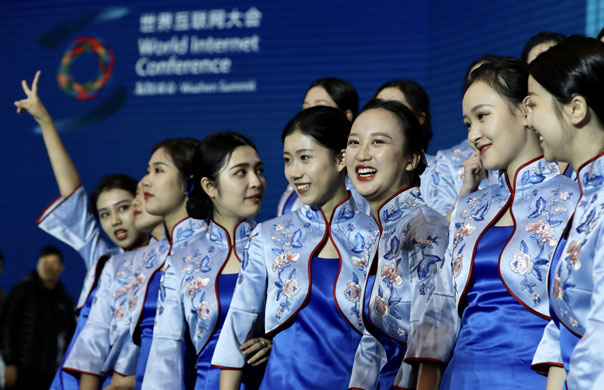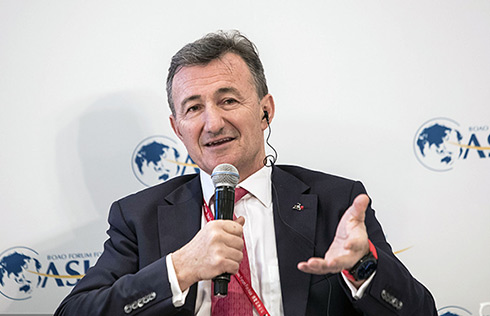Interest rate liberalization, a reform much needed
A vital step
With "repressed" interest rates, commercial banks inevitably fall into a laggard operating and management state. Before the change in July, China had imposed both an upper limit on deposit rates and a lower limit on loan rates, which secured a stable and profitable interest margin for commercial banks.
As long as commercial banks run in an organized way and have basic credit risk prevention measures in place, they will generate stable revenue and won't bother innovating and becoming competitive.
Easy access to bank loans makes SOEs inefficient. In addition to management factors, low-cost loans are a major culprit behind their inefficiency. As many SOEs struggle with asset-liability ratios of more than 50 percent, interest payments account for a large share of their operating cost. As interest rates are lower than the cost of social funds, SOEs are not pushed to improve management and reduce overhead costs. In this sense, they lag far behind private or small and micro-sized businesses, which can only resort to high-cost private lending.
Low bank rates also undermine the growth of wealth. Large amounts of household deposits have hitherto been a major source of profits for commercial banks. To cope with economic volatility and uncertainty, Chinese residents, who are not used to taking risks, tend to deposit their savings in low interest bank accounts.
Therefore, it seems to be the inevitable choice to liberalize interest rates, which becomes an important link in China's financial system reform.
Liberalizing interest rates will give an impetus to China's capital market. The pricing system of social capital will be restructured, bank interest rates will return to market levels, and the bond and stock market will become more attractive to fund raisers.
In addition, the assets of commercial banks will also shrink. Fluctuating interest rates may generate negative interest margins, and then commercial banks will try to handle the swelling credit assets through operations like asset securitization, which will simultaneously expand the bond market. In short, commercial bank assets will witness a decline in the financial system.
Interest rate liberalization will reshuffle the credit structure of commercial banks. Large and competitive enterprises will be better positioned to win favor from investors in the capital market, and commercial banks will find it more difficult to absorb high-quality customers. In this way, they will take a fancy to small and medium-sized enterprises and more willingly lend them money.
Progressing steadily
China has been liberalizing interest rates gradually. While the floor on lending rates has been fully removed (although limits do remain on mortgages to help cool the housing market), the ceiling on deposits remains.
Now, China's interest rate reform has entered a new phase. Other support measures should be put in place to prevent the national economy and financial system from serious potential risks.
In the 20th century, an array of countries carried forward interest rate liberalization in a very cautious way. For instance, in the 1980s, the US interest rate reform lasted six years. Including the incubation period, it took 15 years for the country to liberalize interest rates.
Why is China so cautious about removing the upper limit on deposit rates?
First, if the upper limit is suspended, the price of social funds will promptly shoot up, which may deal a heavy blow to the financial system and normal operations of the economy, just like what happened to many economies during their periods of interest rate reforms.
Second, the government needs to make some preparations before calling off the upper limit, such as establishing a deposit insurance system and formulating laws regarding possible bankruptcies of financial institutions. By thoroughly unleashing deposit and loan rates, competition among commercial banks will intensify and there will be some losers in the end. Even when the United States underwent the interest rate liberalization, swaths of small and medium-sized banks went bust.
Hence, before interest rates are further liberalized, more steps are needed to establish a financial safety net.
External changes are needed to succeed, including adjusting the way local governments spend money, improving the operating and management of commercial banks and optimizing the capital market.
China will need to dampen the enthusiasm of local governments to spend on grandiose projects for the sake of generating high GDP growth. Commercial banks should also take steps to brace themselves for future interest rate risks. At the same time, the capital market should be upgraded to allow more room for the bond and stock markets to provide financial services.
Generally speaking, it will take a long time before China fully liberalizes interest rates. By learning from other countries and gradually loosening the deposit rate ceiling, China will finally achieve this goal.
Fully liberalizing interest rates will have the greatest impact on China's financial system and economic and social life.
Jia Kang is Director of the Research Institute of Fiscal Science under the Ministry of Finance; Meng Yan is an associate researcher at the Research Institute of Fiscal Science

























